Stunning Google leak: Forget ChatGPT – Why Meta, not OpenAI, is winning the AI war

Disclaimer: Opinions expressed below belong solely to the author.
Over the past six months since the ground-breaking debut of the third iteration of ChatGPT, we have grown accustomed to seeing the company behind it — OpenAI — and its bot plastered all over the media as a model example for what the future holds.
Money started pouring in, with Microsoft growing its bet on OpenAI to US$10 billion earlier this year, putting the company’s valuation at around US$30 billion or more, by now.
Meanwhile, Alphabet/Google, formerly considered the leader in the race, has become the butt of public jokes over its botched, hasty launch of Bard AI, widely regarded as evidence of how the trillion dollar giant was caught off guard by competition — and could possibly see its entire business model (based on access to information via google.com) threatened.
Few even considered that Mark Zuckerberg — distracted by his metaverse obsession — could become a major contender… until something happened that flipped the table upside down.
Stroke of genius or luck?
A few days ago, an internal document titled “We Have No Moat, And Neither Does OpenAI”, authored by one of Google’s researchers, was leaked on a public Discord server, sparking a debate about the future of AI — particularly as a closed technology, closely guarded by mega corporations.
While, obviously, not the official stance of the entire company, it does make a ton of sense, especially if we consider where everybody is standing today and where most of the real-life innovation in mass use of AI has originated thus far.
“We’ve done a lot of looking over our shoulders at OpenAI. Who will cross the next milestone? What will the next move be?
But the uncomfortable truth is, we aren’t positioned to win this arms race, and neither is OpenAI. While we’ve been squabbling, a third faction has been quietly eating our lunch.
I’m talking, of course, about open source. Plainly put, they are lapping us. Things we consider “major open problems” are solved and in people’s hands today.”
While our models still hold a slight edge in terms of quality, the gap is closing astonishingly quickly. Open-source models are faster, more customisable, more private, and pound-for-pound more capable.
They are doing things with $100 and 13B params that we struggle with at $10 million and 540B. And they are doing so in weeks, not months. This has profound implications for us:
- We have no secret sauce. Our best hope is to learn from and collaborate with what others are doing outside Google. We should prioritise enabling 3P integrations.
- People will not pay for a restricted model when free, unrestricted alternatives are comparable in quality. We should consider where our value add really is.
- Giant models are slowing us down. In the long run, the best models are the ones which can be iterated upon quickly. We should make small variants more than an afterthought, now that we know what is possible in the <20B parameter regime.
Simply put, the open source community was able to rapidly iterate on the basis of available information — far more quickly than OpenAI and Google, which depend on extremely large and complex in-house models that nobody else has access to.
But how was that possible? How could just a bunch of nerdy hackers leapfrog multibillion giants which had spent years developing their language models? They couldn’t have done it all from scratch, could they? Surely had to have something to work on first?
Yes, they did. Meta’s own language model that was leaked on 4chan in March 2023.
Whether the leak was a deliberate decision by the company or a hack (be it internal or external), it gave the global community firsthand access to the source code of a proprietary model — even if a bit underdeveloped at the time.
Within two months, enthusiasts have filled the gaps all on their own.
“At the beginning of March, the open source community got their hands on their first really capable foundation model, as Meta’s LLaMA was leaked to the public. It had no instruction or conversation tuning, and no RLHF. Nonetheless, the community immediately understood the significance of what they had been given.
A tremendous outpouring of innovation followed, with just days between major developments. Here we are, barely a month later, and there are variants with instruction tuning, quantisation, quality improvements, human evals, multimodality, RLHF, etcetera, many of which build on each other.
Most importantly, they have solved the scaling problem to the extent that anyone can tinker. Many of the new ideas are from ordinary people.
The barrier to entry for training and experimentation has dropped from the total output of a major research organization to one person, an evening, and a beefy laptop.”
Anybody can be a valuable contributor today, and the community itself decides about what succeeds and what doesn’t.
This is the same trajectory that Stable Diffusion has followed over the past year or so, being the only mainstream open source image generation model, that anybody can download and tinker with on their own computer.
Hundreds of websites, marketplaces and communities have sprouted as a result, with thousands if not millions of people working on pre-training their own models at a scale and pace that no single organisation could.
Meanwhile, OpenAI’s own Dall-E 2 was somewhat left behind and the only closed-source competitor, Midjourney, is the last one putting up a fight, trying to outrun the competition coming from half of the world working on their own improvements to Stable Diffusion.
In the aftermath of the leak, Meta — willingly or not — has managed to straddle both ends of this spectrum, in the language model space.
It is obviously a giant, multi-billion dollar, for-profit corporation employing tens of thousands of people of its own — which is, nonetheless, enjoying millions of man hours provided entirely for free by the global developer community, tirelessly building on top of its technology!
“Because the leaked model was theirs, they have effectively garnered an entire planet’s worth of free labour. Since most open source innovation is happening on top of their architecture, there is nothing stopping them from directly incorporating it into their products.
The value of owning the ecosystem cannot be overstated. Google itself has successfully used this paradigm in its open source offerings, like Chrome and Android. By owning the platform where innovation happens, Google cements itself as a thought leader and direction-setter, earning the ability to shape the narrative on ideas that are larger than itself.
The more tightly we control our models, the more attractive we make open alternatives. Google and OpenAI have both gravitated defensively toward release patterns that allow them to retain tight control over how their models are used. But this control is a fiction. Anyone seeking to use LLMs for unsanctioned purposes can simply take their pick of the freely available models.”
If Zuckerberg (or someone in his circle) did not plan this, then he may have just accidentally scored a winning lottery ticket — one which could have far greater value than his success with Facebook.
The New Google?
The parallels with how Google has become the giant that it is today are quite striking.
It has grown so big by fostering organic growth of platforms. It has provided useful tools to millions of people largely free of charge, buying their loyalty in the process, and becoming a profitable middleman offering value-added services between interested parties (starting with most obvious: advertising).
It controls the majority of the global mobile OS market, precisely because of the open source nature of Android that countless companies (big and small) have iterated on — in the pond that Google controls and is then able to monetise (whether by advertising or services like its own app store, cloud computing, business solutions etc.).
How many people would use Google’s search engine if there was a fee to pay for it? Would Android have become a global standard for 80 per cent of smartphones? Would YouTube have been able to monopolise video as it does today?
Meta’s leaked language model — even if it’s currently inferior to the ones powering ChatGPT or Bard — is gradually becoming the standard for all tinkerers out there.
And while the leak was “technically” illegal and nobody can commercialise services built on top of something obtained in breach of the law, all it takes for Meta to capitalise on it is establish a regulated marketplace of its own.
Building a home for all of this grassroots innovation, where it can be monetised under one banner, while Mark Zuckerberg pockets the commission.
Conversely, the company is at liberty to choose the most promising solutions out there and incorporate them in products of its own, since all share the underlying technology.
Meanwhile, OpenAI and Google are stuck at coming up with everything themselves and iterating at a much slower pace, without the community’s input.
The value of secrecy in this business is greatly overstated, as people leave to work for competitors all the time. There are no absolutely unique ideas and with so many smart people, all of the companies are bound to converge in the long run.
The winners will not be defined on the basis of who has done a better job, but rather who is able to succeed in the popularity contest.
This is a story we all know too well. Google wasn’t the first search engine, Facebook wasn’t the first social network, Apple wasn’t the first computer maker, Microsoft didn’t write the first operating system — and so on. Why should it be different with AI?
Of course, Meta can’t just sit idly by if it wants to make the most of this unexpected opportunity. But if Zuckerberg can divert the obscene amounts of money away from metaverse, that nobody wants, into AI that the whole world may soon be dependent on, then it might just be enough to help him score the huge victory he’s been seeking so desperately in the past few years.
Featured Image Credit: Generated with Midjourney
Also Read: Looking for a job? Train in ChatGPT as 9 in 10 employers seek AI skills, according to US survey
Obsessed with perfecting her focaccia recipe, this M’sian brought her bakery dream to life
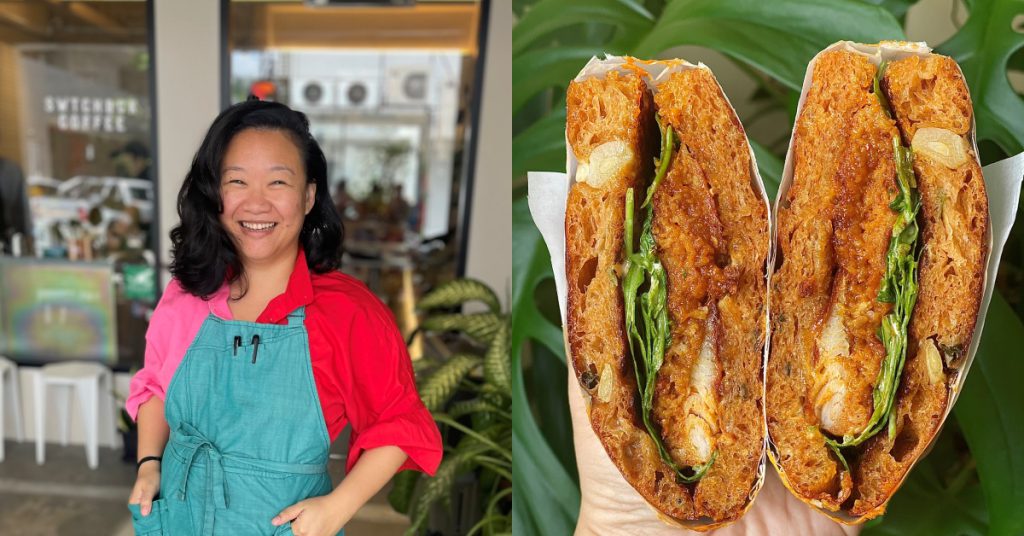
The COVID-19 pandemic caused a shutdown in the world and left us all looking for things to do whilst stuck at home.
As a result of it, plenty of Malaysians turned to baking in order to knead their woes away and to find something new to experiment with.
Such is the story of Choy Ee Ling, who pivoted from her corporate and freelance background in copywriting, PR, and marketing, to fuel her obsession with coming up with the perfect focaccia recipe. This resulted in her starting Ling’s Focacceria.
From writing to baking
According to Ling, she spent the early years of her career in the Sunway Group in the areas of PR, marketing, and business development before becoming a self-employed copywriter/ghostwriter for over 10 years.
“I have a mix of corporate and self-employment experience, which has laid a good foundation for me to start my own business,” shared Ling.
She added that she had no prior experience in the F&B industry but simply found her way in it after she had become obsessed with baking during the lockdowns.
“The moment something piques my interest, I become obsessed and set out to learn all I can about it. I made my first decent loaf of bread during MCO and became focused on perfecting it,” she explained.
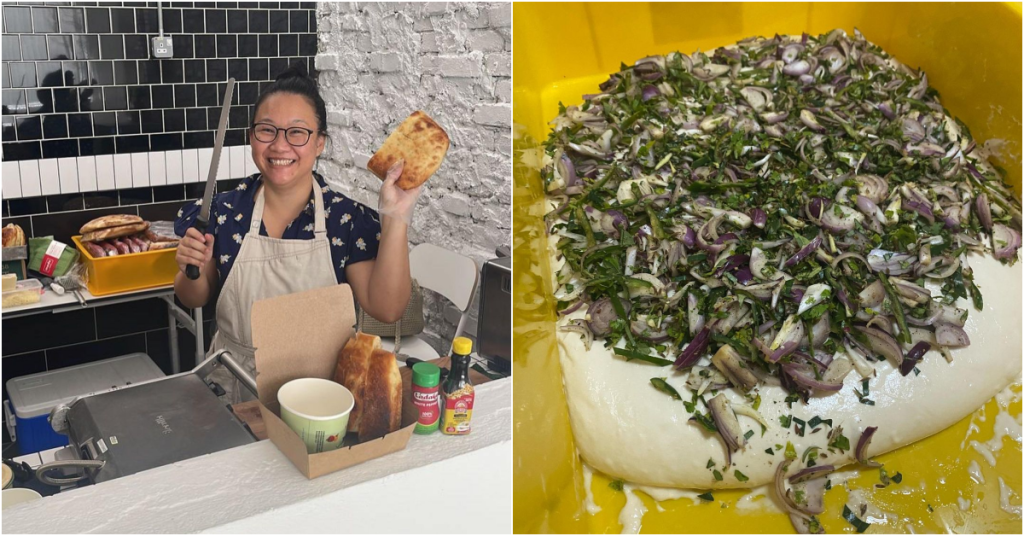
“So, whilst everyone else was fighting over the last loaf of Gardenia on the shelf, (my partner and) I were eating all my test breads, some good, some not so good.”
Ling stated that as she was burning the candle at both ends, so she made the decision to settle on just one venture.
“When I daydreamt about the future, I had bigger dreams for the microbakery. I didn’t want to manage an agency and I didn’t have the inspiration to write the next 50 Shades yet,” she joked.
She shared that her experience in copywriting has also helped her run the business, and that creating engaging content to keep customers interested in the products and brand is very much up her alley.
In fact, Ling said that sometimes it feels like she spends more time creating content than making bread.
“I can mull over a single word choice at length because it changes the nuance of the entire sentence, and it’s not dissimilar to me pondering the right ingredient and how it completes the loaf of bread or sandwich,” she added.
A fresh start
With the help of her partner who is an F&B consultant, Ling developed her passion for making various types of bread until she eventually found her own recipe.
“My partner has many food-related books and in the midst of my fevered experimentations, he left out ‘Ken Forkish’s Flour Water Salt Yeast: The Fundamentals of Artisan Bread and Pizza for me’.”
She explained that after reading this book, she learnt how to incorporate the use of biga (another type of starter besides sourdough and traditionally used for Italian breads) which proved to be a real game-changer.
Her dedication to her experiments proved to be finally worthwhile as she found a way to make focaccia that has a crunchy crust, but also a fluffy and airy interior with just a nice level of chewiness.
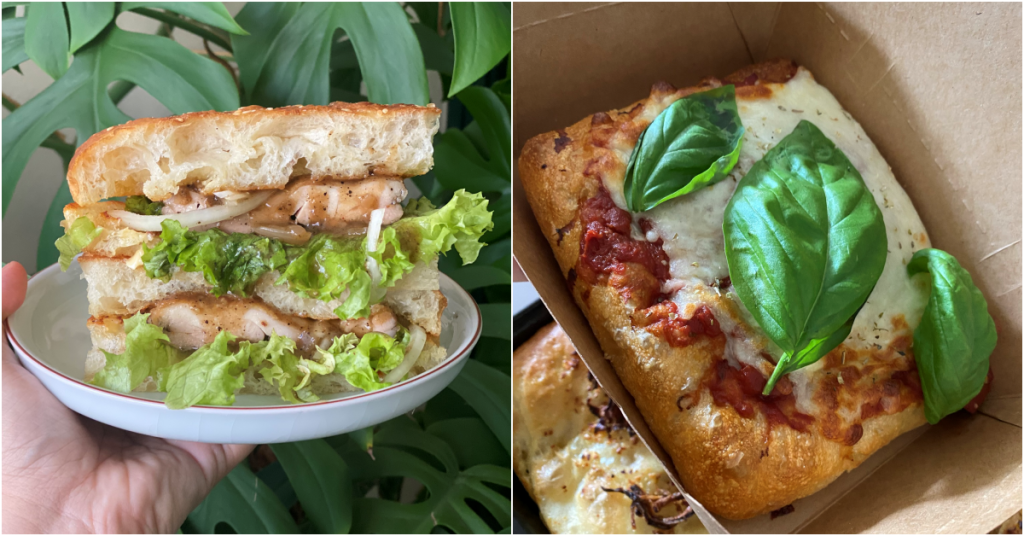
“European breads such as focaccia have a harder crust and drier crumb, but Asians like breads that are light and soft. I have married the two, so, may the gods of Italian bread forgive me but I did it for my people.”
Ling also draws inspiration from local and Asian ingredients to pair her focaccia with such as Sarawak black pepper, otak-otak, kimchi, and miso.
Ling’s Focacceria’s current menu has focaccias such as jalapeno and cheese, miso butter, toasted sesame seeds and honey as well as a range of focazzas (focaccia pizza) and sammiches (focaccia sandwiches). Their prices range from RM18 to RM29.
They also offer special limited edition focaccias such as a vadai focaccia, kimchi grilled cheese focaccia, and otak-otak focaccia sammich.
On her business model for Ling’s Focacceria, she shared that it could be described as Aunty Anne’s meets Pret a Manger.
For production and business aspects, she looks to Auntie Anne’s.
“They are essentially using one type of dough to make multiple SKUs, meaning streamlined ingredients and production processes, easier inventory control, and less wastage, and they occupy small retail spaces, which means lower rental and fewer employees,” she explained.
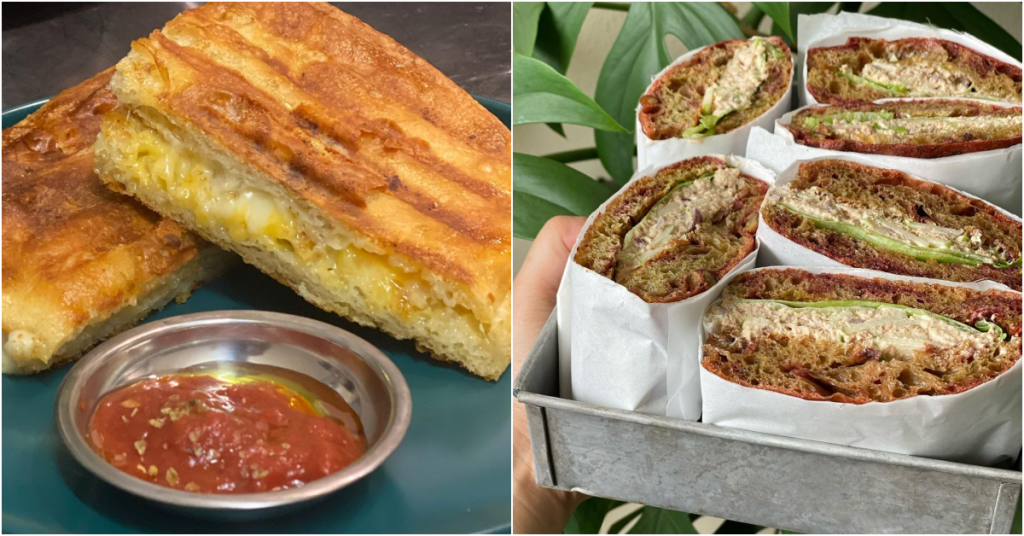
However, what she would like to offer with Ling’s Focacceria are more substantial and fulfilling meals beyond just bread, hence why she has started including sandwiches, soups, and dips in her menu.
“I want to offer food that you can grab-n-go or that can be prepared quickly, like Pret. So, fast ‘fresh’ food?”
As of now, Ling runs the business herself with the help of her partner who steps in to help in between his F&B consultancy projects.
“He is my consultant, quality controller, idea contributor, new product tester, kitchen helper, driver, and ingredient-shopper,” shared Ling.
“My partner is an endless fountain of food-related ideas and I will often pick his brains for free what he charges others good money for.”
Waiting for the dough to rise
Ling’s Focacceria is currently subletting a space at Swtchbck Coffee, a cafe in Sri Hartamas, and Ling is producing the bread at home.
Prior to this, Ling shared that she has done a pop-up at Bijou, Ara Damansara.
“These experiences have been fantastic and both café owners are wonderful people who are dedicated to the art of coffee-making.”
Moving forward, she hopes that Ling’s Focacceria can work with cafes specialising in beverages to either share the space or supply RTE (ready-to-eat) products to them. Currently, she is supplying on a very small scale and is keen to build upon this part of the business.
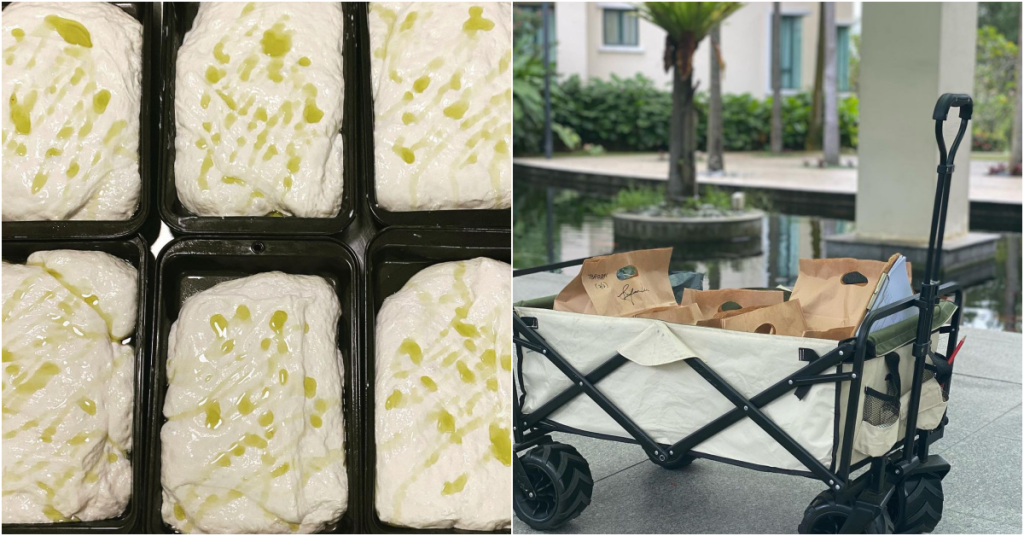
“I am eagerly looking for a suitable space that’s affordable to set up a production kitchen now so I can scale up production, expand Ling’s physical presence, and supply to other cafes. Then I can start building my team,” stated Ling.
She also eventually plans to set up kiosks or small outlets in high traffic areas near offices or inside shopping malls.
At the moment, her sales alternate between online and dine-in depending on the day. This is because she has just transitioned from selling via online delivery/self-pickup and only on the weekends to now being at a physical location that offers dine-in and operates six days a week.
Ling’s Focacceria does anything from RM200 to RM2,000 in sales in a day, depending on the season.
On a mission to educate Malaysians
On her biggest challenges and how she deals with the competitive industry of baking in Malaysia, Ling shared that actually, production-wise, the greatest obstacle is the Malaysian climate as the ambient heat affects the dough.
Meanwhile, in operations, managing deliveries is her number one headache as factors such as rider availability, reliability, and weather can all affect whether the order is delivered in a timely manner.
Another challenge is to educate customers on the proper storage and reheating of artisan breads and on what sourdough really is.
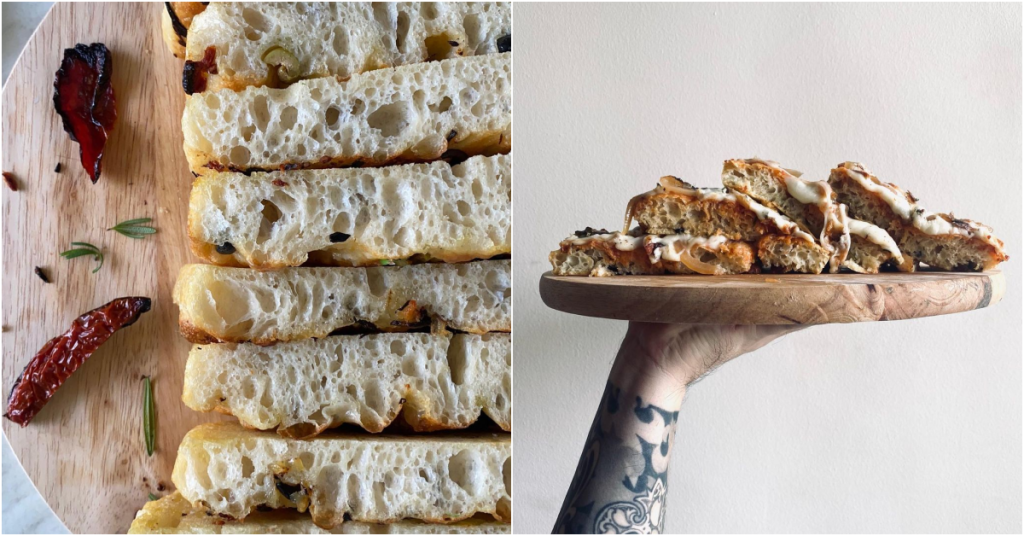
“Many people will microwave or refrigerate the breads, which makes them tough and dry. Please freeze your breads to store and use a toaster, oven, or airfryer to reheat them!”
On how she handles the business despite the headaches, Ling said, “I’m very much a ‘banana’, but there is a Chinese saying in regards to approaching new business ventures, that is to ‘cross the river by feeling the stone’.
“I subscribed to that till today. In any new experience or venture, I take one step at a time, carefully and thoughtfully, before I decide on the next one.”
- Learn more about Ling’s Focacceria here.
- Read other articles we’ve written about Malaysian startups here.
Also Read: Role-play as Friends characters & gossip over endless coffee at this coworking pop-up in KL
Featured Image Credit: Ling’s Focacceria
How these M’sian YouTubers’ merch became an established streetwear brand modeled at KLFW

Those who have visited Eslite Spectrum, the Taiwanese lifestyle store in The Starhill, will likely have come across quite a unique store called Dissyco.
With bags of “ikat tepi” drinks and stalls resembling those found in kopitiams, this store has chosen to go with an iconically Malaysian mamak concept.
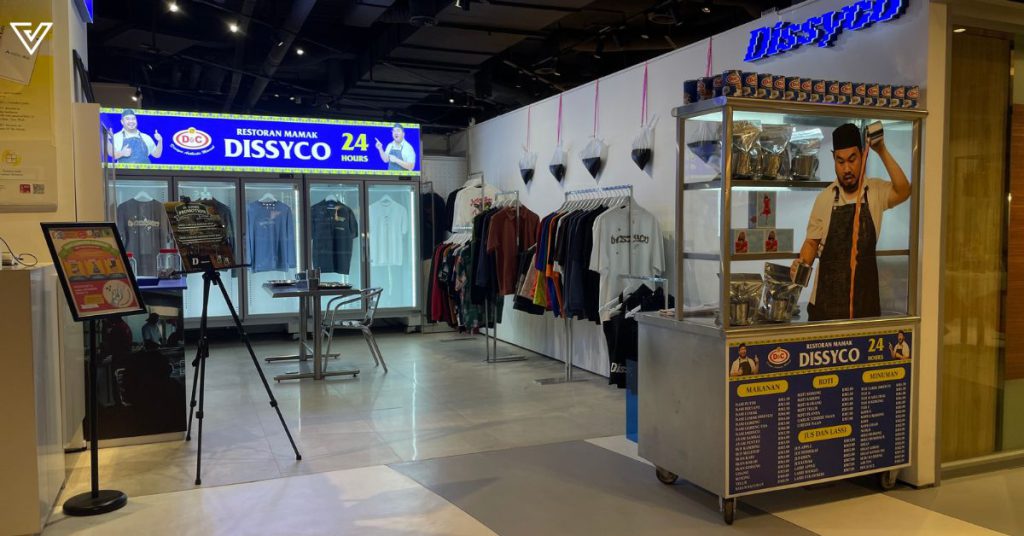
Naturally, you would be right to assume that this brand is a local, homegrown one. But you might not know that the people who created this brand are a Malaysian Chinese YouTube troupe by the name of Dissy.
It started as a merch brand
With 700K subscribers on YouTube, Dissy is a channel founded in December 2018 that creates Chinese content. Its videos consistently bring in hundreds of thousands of views, with its most popular video garnering nearly 20 million views.
In 2019, it had released a line of merchandise to give fans a more tangible way of supporting the Dissy brand.

The collection ended up selling out within the hour.
“With so much demand for Dissy merch, the idea to start a fashion label was born,” shared Dissyco’s creative director, Justin Chew.
Meet the mastermind
Before being involved with the Dissyco label, Justin Chew had already been quite the trailblazer in the fashion industry.
Now 32 years old, the Malaysian’s interest in fashion design stems from his childhood.
“Since young, I was more into clothes than toys,” he recalled. “During high school, I bought my first I-D fashion magazine. From there, I slowly got into clothing and design.”
A graduate of Raffles College of Higher Education, Justin showcased his first collection at MIFA (Malaysia International Fashion Alliance) 2010. The following year, he emerged as a finalist in MIFA 2011 Kronenbourg’s Who’s Next competition.

With that, Justin launched his own label, Justin Chew Basic Label, in 2013. It has since been rebranded as JNTC by Justin Chew.
Then, in 2019, Justin was headhunted and got a chance to work in Hong Kong as a fashion consultant.
Needless to say, Justin has had quite an illustrious career. So, how did he end up as the creative director for Dissyco, too?
“In 2020, while I was based in HK I came across their video on YouTube and then started following them because their content does make me feel at home,” he shared.
A few months later, Justin came across a post from Dissy that stated the team was looking for a fashion designer. Without much thought, Justin sent in his resume.
“Then I got a call from my partner JY, and they offered to let me work on three releases together and test them out,” he recounted.
“After those three releases, they offered me a creative director position and a partner at Dissyco. So early 2021, I decided to accept the offer and go back to KL for good.”
Balancing fans and fashion
Under Justin’s leadership, Dissyco has grown from YouTuber merchandise status to a brand that has appeared on platforms such as KL Fashion Week 2021.
Yet, that doesn’t mean that the brand has completely cut ties with the Dissy YouTube channel.
“When we rebranded and started Dissyco, our aim was to create a fashion and streetwear label,” he said. “But at the same time, we will continue Dissy merch, so both directions are different.”
On a day-to-day basis, Dissyco does operate separately from Dissy, with Justin at the helm when it comes to the creative ideas and productions. However, Dissyco still relies on the content creators from Dissy when it comes to video and photo shoots.
Likewise, when Dissy needs help with clothing advice, they’ll go to the Dissyco team, too.

Looking at the clothing offered by Dissyco, it might seem as though the designs are quite simple and straightforward, and thus might not require much effort to create.
“But to me, making a perfect T-shirt cutting and material takes us two to three months to finalise,” Justin refuted. “If you do check out our past few collections and the KL Fashion Week Show you will think differently.”
At the end of the day, it’s not just the visual design that constitutes a good creative director or a clothing brand.
Rather, Justin thinks of clothes more holistically. More than just the designs you see, it’s the culture that’s being created by a brand that’s important too, from the branding and marketing to the production and team building.
“I’m learning every process with Dissyco and my team,” he said. “So, I’m not only designing clothes. I’m designing Dissyco’s future.”
Becoming something bigger
While Dissyco’s origins lie in Dissy, the YouTube channel, and its many fans, the clothing label appears to have greater ambitions than simply just catering to the channel.
“After all, we want to be a self-sustaining brand, and Dissy fans are a bonus to us,” Justin shared. “What Dissy provides us is a bonus to us.”
With the mindset of becoming a self-sustaining label, Dissyco has plans to do more collaborations with local artists and designers this year.
Justin shared that by the end of May, the brand will be launching a collaboration with Nestwo, a graffiti artist based in Kuala Lumpur.
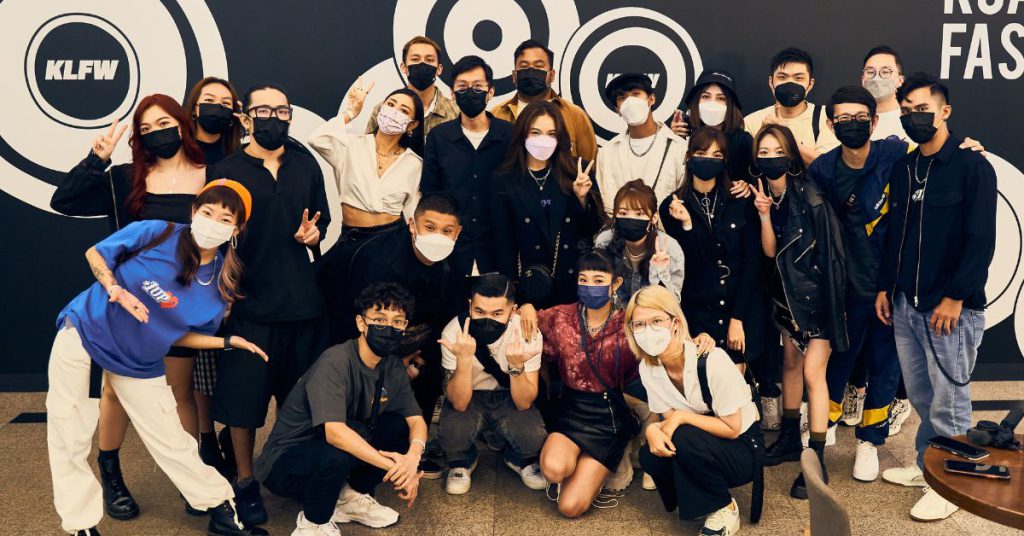
In the long term, Dissyco also hopes to open up more stores and even expand overseas through efforts such as joining international streetwear trade shows.
“We thank Dissy fans for giving us a good starting point and support,” Justin acknowledged.
“Now, with our materials, quality, and design, we’ve managed to get a bunch of new customers that like Dissyco products, and that’s our aim as well—to have more customers who didn’t know Dissy but like Dissyco products.”
Also Read: Role-play as Friends characters & gossip over endless coffee at this coworking pop-up in KL
Featured Image Credit: Dissyco
WhatsApp launches in-chat payment feature in S’pore – there are no transaction limits or fees
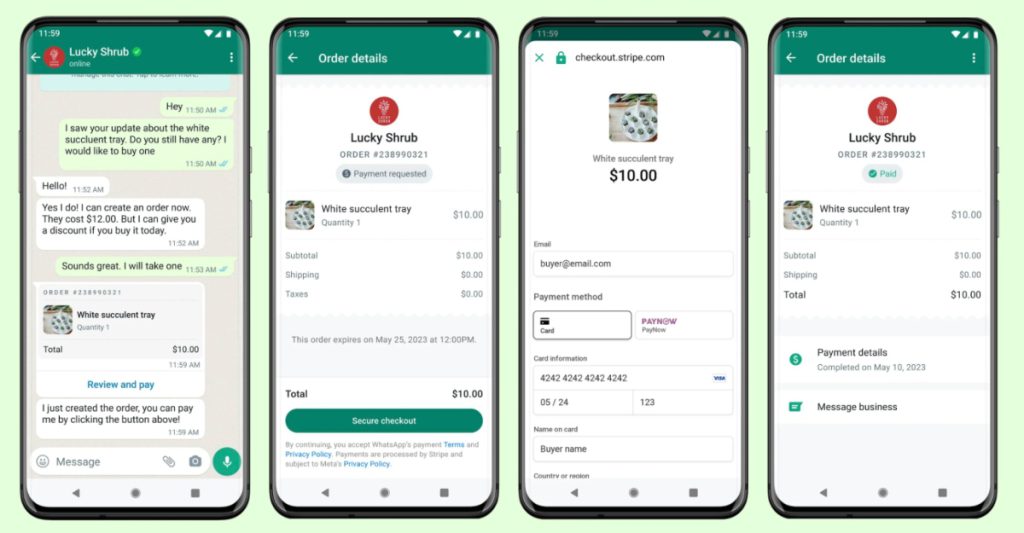
WhatsApp launched today (May 9) a new payment feature that allows users and businesses in Singapore to buy and sell directly via the messaging platform.
The in-chat payment feature will initially be rolled out to selected businesses using the WhatsApp Business Platform in the city-state, with more set to gain access in the coming months. Currently, it is already available in Brazil and India.
The service is supported by payments service provider Stripe and enables Singapore residents with a locally registered WhatsApp number to make purchases using Visa, MasterCard and American Express credit and debit cards or PayNow.
Most people I know in Singapore use WhatsApp to chat with each other.
Now, they can pay local businesses using the app as well. The speed and convenience of payments through WhatsApp will help businesses expand their revenue streams with new channels and access a wider customer base.
– Sarita Singh, regional head and managing director for Southeast Asia at Stripe.
WhatsApp said that it will not impose transaction limits or charge additional fees for utilising the in-chat payments feature.
To ensure confidentiality and data privacy for its users, the messaging platform said that it works with trusted payment partners who are required to comply with payment card industry data security standards.
In addition, its policies require users to provide their legal name and identity for verification before being eligible to use the payments feature. Customer information is also transmitted directly to the payment partner, without being processed or viewed by WhatsApp.
Starting today, people in Singapore can pay their local merchants on WhatsApp in just a few taps. This seamless and secure experience will transform the way people and businesses in Singapore connect on WhatsApp.
– Stephane Kasriel, head of fintech at Meta
Featured Image Credit: Stripe
Also Read: This ex-Facebook engineer built an app that simplifies WhatsApp ordering for small businesses
This M’sian mum’s butter cookies are almost too cute to eat, her brand’s story is even cuter

Being a career woman and being a mother at the same time can be frustrating. The juggle of being present in your children’s lives while progressing in the work field is exhausting.
Or at least, that’s what I’ve heard.
Tired of having to choose one or the other, Jacelyn Tan decided to take back control of her life.
In doing so, she also found a new love for baking with her home-based cookie bakery, the.little.things by Jace.
From crunching numbers to crunching cookies
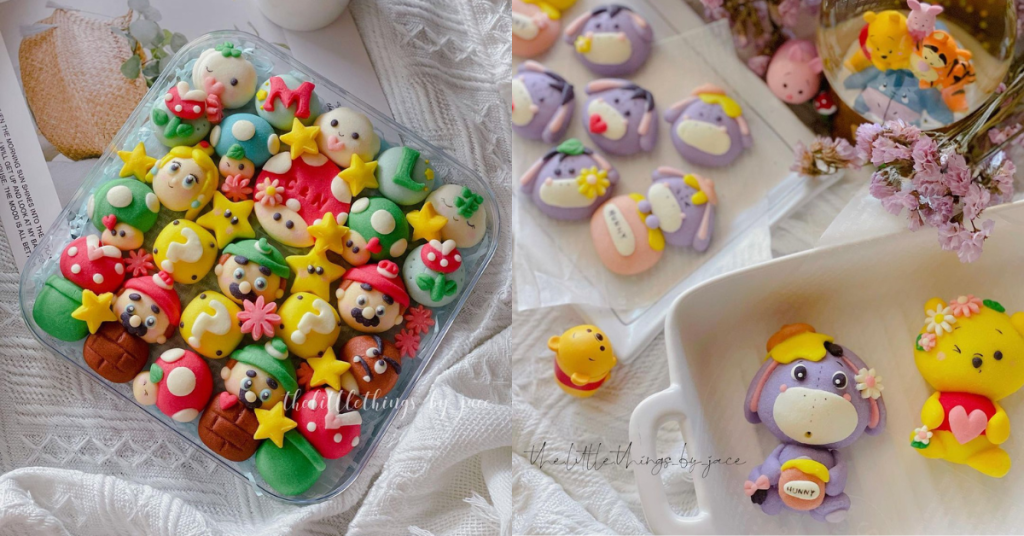
About three years ago, Jacelyn took a career break from her job as an auditor. She had been working in the finance field for local and MNC companies for approximately 13 years.
And in that time, she started a family and gave birth to two children.
But after a while, Jace found it hard to balance home life and work life. “I had to cope with a lot of stress and tight deadlines. Hence, I didn’t manage to spend a lot of time with my young children,” she confided.
“I knew that this wasn’t the life I wanted so I decided to take a break. Thankfully, my husband and parents are very supportive of my decision.”
With a determination to spend more time with her young children, Jace tendered her resignation. But her manager countered it with an offer for a year’s worth of sabbatical leave.

So she took up the opportunity and relished being more present in her children’s lives.
It was during this period that she came across adorably designed meringue cookies on Instagram. They were cute enough to entice her into trying baking again.
Before this, Jacelyn had tried baking cakes by following step-by-step guides on YouTube. But what came out of the oven never really turned out quite right.
“The outcome can be very different from what I expected, as there are various reasons for the failure,” she shared.
But she just “couldn’t resist” the cuteness of the meringue cookies and decided to give baking another go.
She had a butter experience this time around

Learning from her mistakes, though, Jacelyn opted to have a more tailored baking experience this time. She stumbled upon a teacher who could make cute meringue cookies and signed up for a class.
“I attended her class and found out that baking is actually not that bad. I mean, at least making cookies is easier than cakes,” she opined.
So she attended more baking classes, a few online classes with teachers from Taiwan, and also did self-learning from YouTube.
When she wasn’t spending time with her two children and husband, she was in the kitchen practising her newfound interest.
Once confident with her creations, Jacelyn started sharing her cookies on Instagram. With the delicate designs made, it’s no surprise that people grew intrigued and began asking to buy from her.
Thus, the.little.things by Jace was born.

The brand started out selling meringue cookies shaped like cute cartoon characters. However, it’s since pivoted to making butter cookies as Jacelyn found meringues too sweet.
“[I’m] too old to handle sweet stuff,” she teased without revealing her age.
Her kids also loved the meringue cookies, but she figured it wasn’t the healthiest snack to always have at home. So butter cookies were the alternative she found.
The designs are still adorably attractive cartoon characters, such as Disney princesses, Studio Ghibli’s Totoro, and even Warner Bros’ Mario and Luigi. But she stated that the most popular request so far is for Tsum Tsum characters.

If there are special requests for designs that are not within her capabilities, Jacelyn shared that she sticks with being honest and declines the order.
“I do not want to make something that I am not ready for and that I don’t think looks like what the customers need.”

During festive seasons, there’s also an exclusive menu item—butter cookies with fillings like chocolate and pineapples.
The prices vary from RM4.50 to RM300 and above, depending on the butter cookies’ flavours and designs.
The choice of packaging also plays a part in the final pricing. There are packages for full moon gift boxes and fairy light gift boxes, as well as individually packed door gifts for events.
The mother of two handles everything in the business by herself, from coming up with designs and marketing on social media, to baking and arranging the deliveries.
But she does receive help for bulk orders from her parents and children when the work is too much for her alone. This is especially the case during the brand’s peak seasons (AKA cultural festivities).
Girlbossing through life on her own terms

Speaking to Vulcan Post, Jacelyn shared that this venture wasn’t in her initial plans at all. She introduced herself, first and foremost, as a full-time housewife.
“My full-time job is still a mother, tutor, driver, maid, and chef (to my children),” she jokingly described. “The business is my part-time job, as I’m a part-time baker now.”
As such, orders for the home-based brand are only taken based on her personal availability.
And if you’re wondering if she ever went back to work after her sabbatical leave ended, the answer is no.
The reason behind it is the same as why she tendered her resignation in the first place.

While the largest difference between her old job and new part-time career is the income, the flexibility provides more liberty for her to balance family life and her passion.
Plus, she feels that it’s not too different from her last occupation either. The core value for both jobs is mindfully practising patience.
In regards to the.little.things by Jace’s future, the founder explained that she was invited by some baking studios to host workshops.
“[They’re] for people like me who love making cute cookies, and full-time housewives who wish to earn some pocket money,” she said.
So that’s her plan for now. To prepare herself for the new role, Jacelyn is back in the classroom brushing up her skills and taking notes on how to effectively conduct workshops.
- Learn more about the.little.things by Jace here.
- Read other articles we’ve written about Malaysian startups here.
Also Read: Role-play as Friends characters & gossip over endless coffee at this coworking pop-up in KL
Featured Image Credit: the.little.things by Jace

